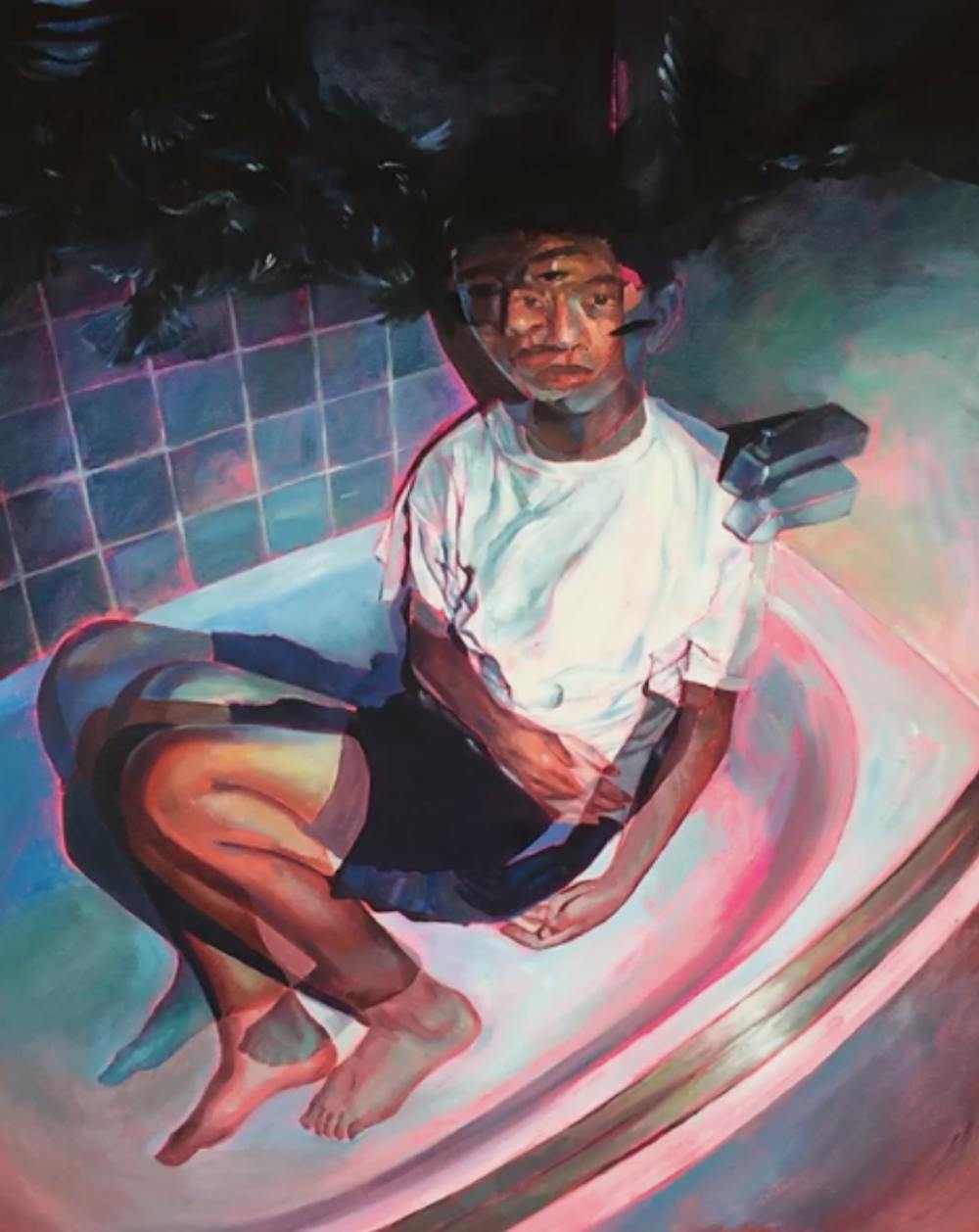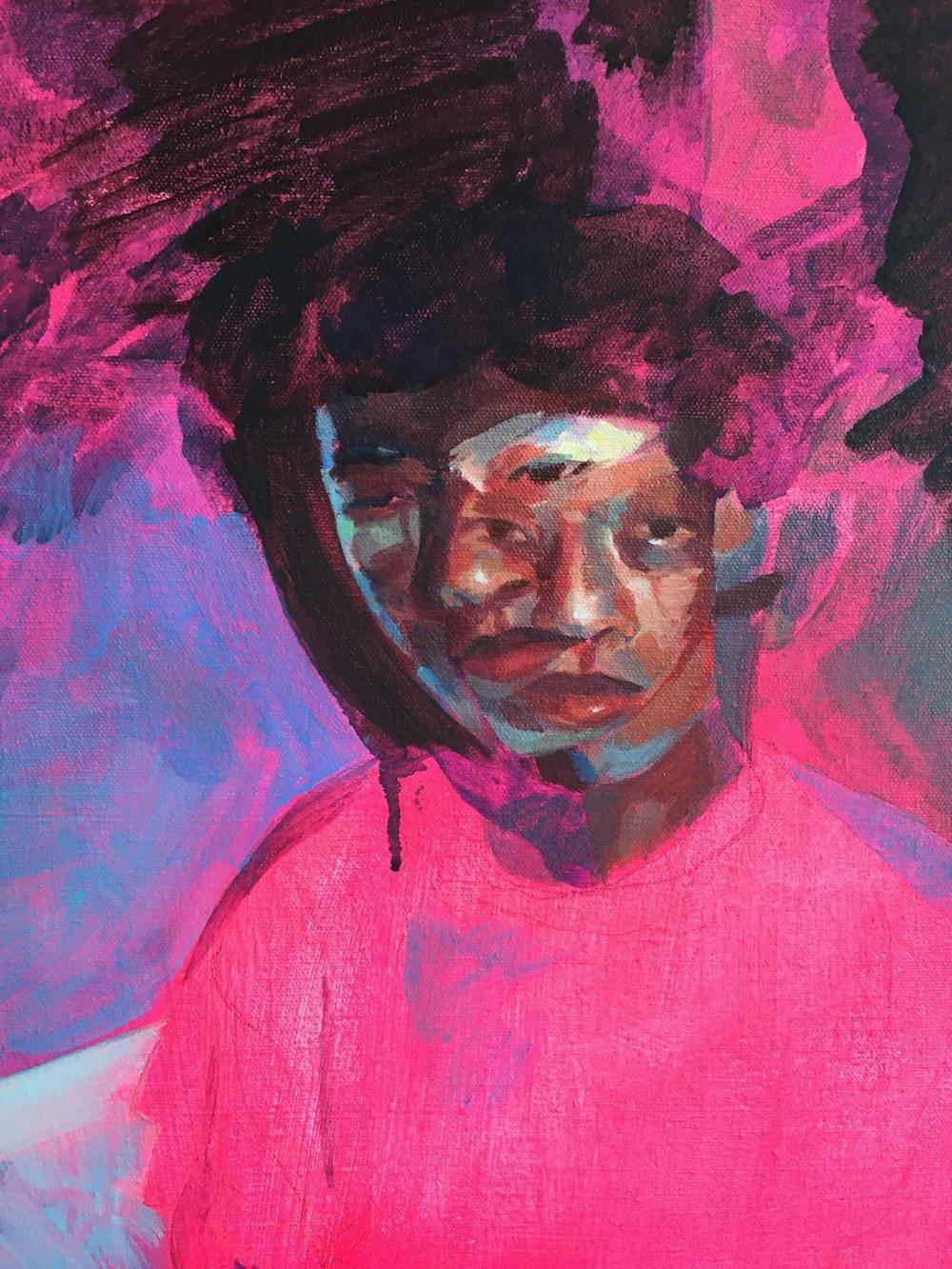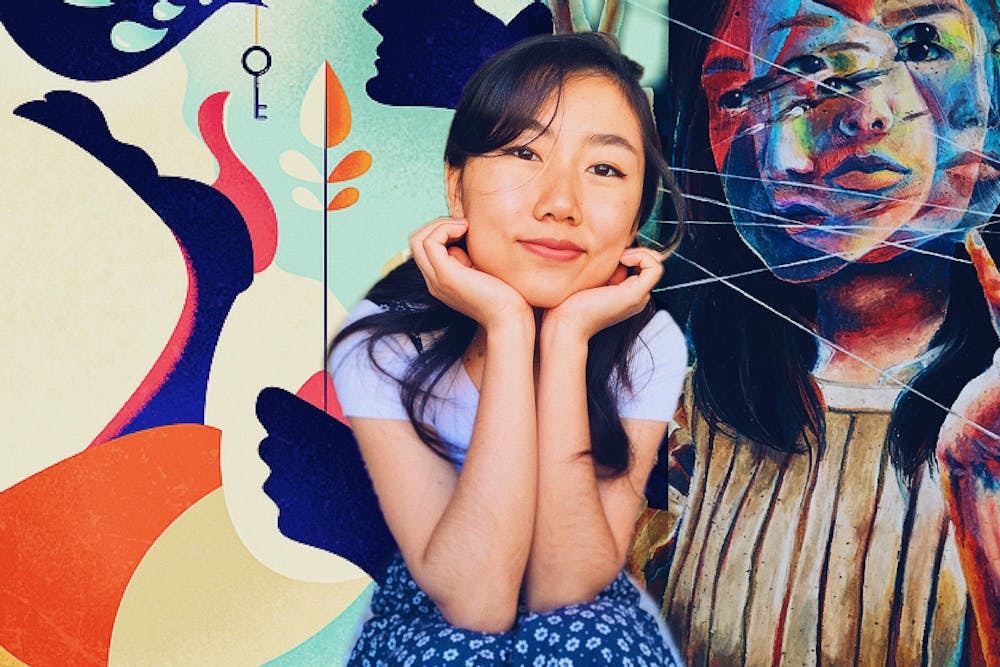Cynthia Zhou (C’23) first began exploring design through anime fan–art forums in middle school, and since then, her love for creating art has blossomed into a diverse and impressive portfolio. Her work has not gone unnoticed—she is a 2018 National YoungArts Foundation Finalist and was recognized at the White House as a 2019 Presidential Scholar in the Arts. She has also been featured in exhibits in the Kennedy Center in DC, as well as New York City, San Francisco, and Miami. Although Cynthia’s portfolio spans from paintings to logo graphics, her art consistently uses color to represent how we interact with our memories. Now she’s turning her passion for introspection professional, using her knack for emotive color theory to design for grassroots movements. For Cynthia, her talent serves a deliberate purpose: to promote equality.
“A running theme in my fine art is emotion and memory, and more about expression than communication—the transience of memory and identity,” Cynthia says. The painting below, titled An Affinity for Dreaming, is part of a collection Cynthia completed in high school. Here, she depicts her brother in a bathtub, using various overlapping photos of him as reference.

When asked about her interest in studying memory, Cynthia explains that her curiosity sprang from reading the Glass Menagerie, an autobiographical Tennessee Williams play that uses memory weave together a story about how expectations don’t quite line up with reality for a family that’s seen better days.
“The forward of the Glass Menagerie talks about [it being a] memory play—how memory distorts things and changes things over time and how it blocks out certain parts and strengthens others,” she says. “So I was really thinking about the relationship between photo accuracy as juxtaposed against the always fleeting changing presence of memory. It’s always more accurate to depict memory in a less photorealistic way.”
Cynthia’s attention to detail and depicting memory starts with a blank canvas. When working with paint, she primes all her canvases with a hot pink color, as the presence of color in memory is strengthened. In addition, her work often contains images of overlapping faces and colors.

“It's hard to compress the passage of time and memory in a 2D space, so I play around with a lot of overlaps and multiplications of faces to capture the sense that time isn’t just a snapshot, and it exists beyond the painting,” she says.
These days, Cynthia has shifted her creative energy to making graphics for grassroots organizations and she has plans of becoming a pro–bono designer in the future. Her most recent work includes health literacy graphics for immigration centers, logos for The Free Lunch Collective, and graphics for Meals for Heels, an organization that provides meals for sex workers.
As the medium of work shifts, the process of designing also evolves, Cynthia explains.
“A key feature of my design work is speed and urgency—design done in response for something —done to raise money and awareness. Doing more of that design work is definitely a direction I want to head in. The role that design is playing and will play in creating a more equitable world is a bigger thing than the design itself,” she says.

